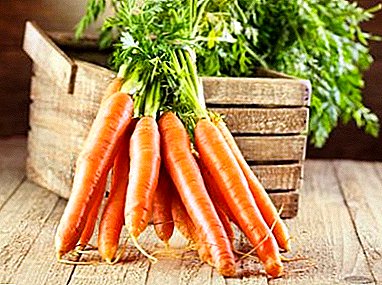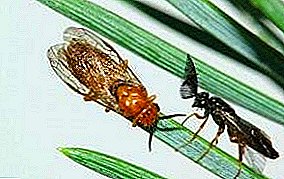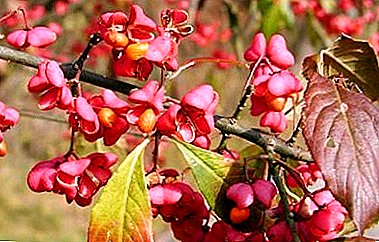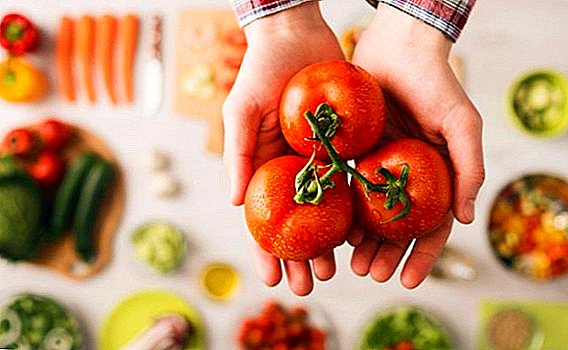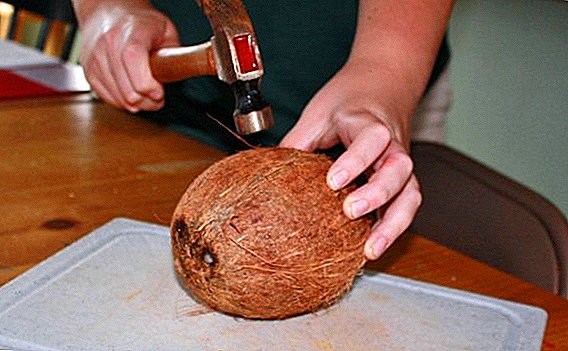 Increasingly, modern housewives use unusual and even exotic products in cooking, and even if you don’t surprise anyone on the table with pineapple, coconut can still be considered a wonder. Despite the fact that these large nuts can be easily found in the free market, not all buyers know how to select and open them correctly, and there are many ways. What is worth knowing about the rules of purchase and further use of coconut - read on.
Increasingly, modern housewives use unusual and even exotic products in cooking, and even if you don’t surprise anyone on the table with pineapple, coconut can still be considered a wonder. Despite the fact that these large nuts can be easily found in the free market, not all buyers know how to select and open them correctly, and there are many ways. What is worth knowing about the rules of purchase and further use of coconut - read on.
Coconut
Coconut or just coconut called fruits of plants belonging to the Palm family.
Check out the list of the most common types of palm trees, especially with date palm.
 Translated from the Portuguese "soso" means "monkey", and if you carefully look at this exotic product, you will notice that the spots on it really resemble the face of this animal.
Translated from the Portuguese "soso" means "monkey", and if you carefully look at this exotic product, you will notice that the spots on it really resemble the face of this animal.Did you know? According to scientists, Southeast Asia is considered the birthplace of the tree, but in modern conditions the largest exporters of such nuts are the Philippines, Indonesia, Thailand, Brazil, Sri Lanka and many other countries on the Pacific coast.
In truth, coconuts are not nuts at all, as many people consider them, but rounded drupes, with thick-fiber (about 10-30 cm in diameter), which are cleaned before transport. One such fruit reaches a weight of 0.4-2.5 kg.
The outer shell of a drupe, which we can see with you on the shelves of supermarkets, is a hard shell, with three “eyes” on it - softer areas located approximately in one place.  If you break the shell, then inside you can find another nut, the same hollow, but not hard, but soft.
If you break the shell, then inside you can find another nut, the same hollow, but not hard, but soft.
The nuts also include pecans, pistachios, pine nuts, Brazil nuts, hazelnuts, cashews, Manchurian nuts, walnuts.White flesh is often called "scraps", it contains a certain amount of coconut water, sweet in taste.
Just this pulp, along with coconut milk, and fit for human consumption.
Coconut "insides" are dried, added to different dishes (in particular, to confectionery products), and also processed to produce coconut oil, valuable not only in the field of cooking, but also for cosmetic purposes (added to shampoos, used in face masks ).
Did you know? For a good harvest of large coconuts, the palm tree should extract at least 1.34 kg of salt annually from the soil. That is why the largest sizes of these fruits reach when the tree grows near the ocean, and the farther from it, the smaller they are, and the plant itself does not live for a long time.

The beneficial properties of coconut
It is not surprising that coconuts are widely used not only in cooking, but also in other areas of human activity.
Only 100 g of coconut pulp contains 0.06 mg of thiamine, 0.01 mg of vitamin B2, 0.96 mg of vitamin PP, 30 μg of folic acid, 0.72 mg of vitamin E, 2 mg of vitamin C and a number of others, no less useful components (for example, potassium, calcium, sodium, sulfur, iron, iodine, phosphorus, chlorine, etc.).
Folic acid is found in foods such as shallots, green onions, Chinese pear, quince, zucchini, kivano, rosemary.
In addition, it is impossible not to note the presence in the coconuts of proteins, carbohydrates, natural sugar and fatty acids. As for the calorie content of these large nuts (we will call them the most common term), 100 g contains 364 kcal.
Coconut juice perfectly quenches thirst, but the local population of those regions where coconut palms grow, appreciates the plant for other beneficial properties.  So, coconuts will be very useful to people after poisoning, those who suffer from diarrhea or suffer from otitis.
So, coconuts will be very useful to people after poisoning, those who suffer from diarrhea or suffer from otitis.
Coconut milk is an excellent remedy for the problems of the reproductive system (it has a diuretic effect, is able to break stones and successfully fights infections), and the burnt shells can be applied to inflamed skin, with burns and ulcers.
Curcuma, safflower, white willow bark, goldenrod, chervil, dog rose, mordovnik has a diuretic effect.On the basis of coconut water, saline solutions are often prepared, since this liquid has antipyretic properties.
Its use is allowed to people suffering from diabetes, and is also recommended for those who are engaged in heavy physical work.  Many doctors believe that regular use of coconuts has a great effect on the functioning of the cardiovascular system and reduces the level of cholesterol in the blood, and therefore, reduces the risk of atherosclerosis.
Many doctors believe that regular use of coconuts has a great effect on the functioning of the cardiovascular system and reduces the level of cholesterol in the blood, and therefore, reduces the risk of atherosclerosis.
Important! In addition to the above useful components of coconut, it also stores lauric acid, the positive properties of which can not be doubted. She - the basis of breast milk.
How to choose a quality coconut
To enrich your body with only beneficial substances taken from the fruits of the coconut palm, it is very important to be able to choose the right nuts. 
Not everything in this process depends on luck, so you should pay attention to the main selection criteria:
- Assess the appearance of the coconut, carefully examining it from all sides. It should not be any mechanical damage, stains or mold (especially rot). The color of a quality fruit will be uniform, and cracks, dents or drips of milk are unacceptable in the structure.
- Smell the selected instance. A fresh smell is a sign of freshness of the product, while an unpleasant putrid odor indicates a long transportation or long stay of goods on the shelf, which, however, is understandable.
- Bring the nut to your ear and shake. If you can hear the milk splashing inside, everything is fine, you have a high-quality coconut in your hands. In the case when the feeling of fullness is absent, it makes sense to think about the depravity of the fetus. The use of such products is threatened by poisoning, with all the ensuing consequences.
- Pay attention to the three holes located on the end of the coconut: like the rest of the surface, there should not be rot and mold. It is desirable that the color in these places was a little darker than the shade of the rest of it.

Important! If there is an opportunity, and the price of coconuts is affordable, then you can take a few nuts: at least with one you can guess (in most supermarkets they are sold by the piece, which means you will have more chances to choose the largest ones). The fruit will be the most delicious, the flesh of which resembles in appearance the composition of the well-known "Bounty", unless without unpleasant taste of chemistry.
How to clean a coconut
Suppose you have already chosen and bought the most beautiful and high-quality coconut in appearance, but to enjoy it in full - you need to know how to properly open it. There are several ways to achieve the desired result.
Method 1
Coconut is quite a complex fruit, because in order to eat it, you first have to split a thick shell. At home, several tools can help with this, but the kitchen equipment is the simplest and most affordable. To get to the tasty pulp, you need to use only two knives: sharp narrow and large cutting (well, if it is heavy).
The whole process of cleaning the coconut drupe in this case is as follows:
- prepare a cup for draining the juice and the two knives above;
- pick up the acquired coconut and unfold it with holes to yourself (a peculiar monkey face, with eyes and mouth, is obtained);
- In the hole, which eventually turned out to be closest to the center and plays the role of "mouth", you need to insert a thin and long knife, picking out all the excess and getting to the middle;
Important! The hole needs to be done a little at an angle, to make it easier to pour the coconut juice.
- as soon as the knife goes inside, turn the coconut over the cup and drain the liquid inside (you may have to shake the fruit a little);
- now it remains only to open the thick shell and get the flesh, which will require a second large and heavy knife;
- tapping it all over the surface, very soon you will hear the characteristic crackle of a breaking shell, after which you will need to remove all of its parts (the process is somewhat like the cleaning of a chicken egg).
That's all, in your hands you have a soft middle, which you can just eat or use to complement various dishes.
Method 2
In this case, to open a thick coconut shell, you will need a hacksaw (or a small saw), a screwdriver, a cup, a bowl and, in fact, the coconut itself. It cannot be said that it will be very easy to achieve what you want, but if you fulfill all the tasks accurately, you are guaranteed success.
So what you need to do:
- Having prepared everything you need, take a coconut and lay it horizontally on a table, previously covered with unnecessary paper (so you do not stain it with scattering particles of the outer shell);
- Using a hacksaw, start cutting it exactly in the middle, but without extending the tool more than 0.5 cm (the incision should go around in a circle so that as a result of the opening you will have two identical halves of the shell);
- Having coped with this task, wash the stone fruit well under running water and wipe it with a towel;
- take a screwdriver and, inserting it in different places of the formed hole, try to disconnect the halves so that as a result you only have a whole middle of the coconut;
- and, finally, a not so hard nut can simply be cut into two halves with a sharp narrow knife.
Method 3
This method is somewhat similar to the first, only the liquid does not need to drain through the hole. The main trick in this case is to strike with a hammer, while holding the coconut in your hand, so to speak, on the weight.
So you do not damage the middle, while the thick skin begins to crack and fall off from the fruit pieces.
Important! All strokes must be accurate and accurate so as not to hurt the softer middle.
As soon as you have in your hands a coconut that is intact, you just have to cut off its top and drain the juice that is inside. The flesh is also perfect for self-consumption, and to complement various dishes.  Thus, everyone can determine the most convenient way to open a coconut, the main thing is that its contents should not disappoint you, although, adhering to the above recommendations for choosing a fruit, this option is practically excluded.
Thus, everyone can determine the most convenient way to open a coconut, the main thing is that its contents should not disappoint you, although, adhering to the above recommendations for choosing a fruit, this option is practically excluded.


